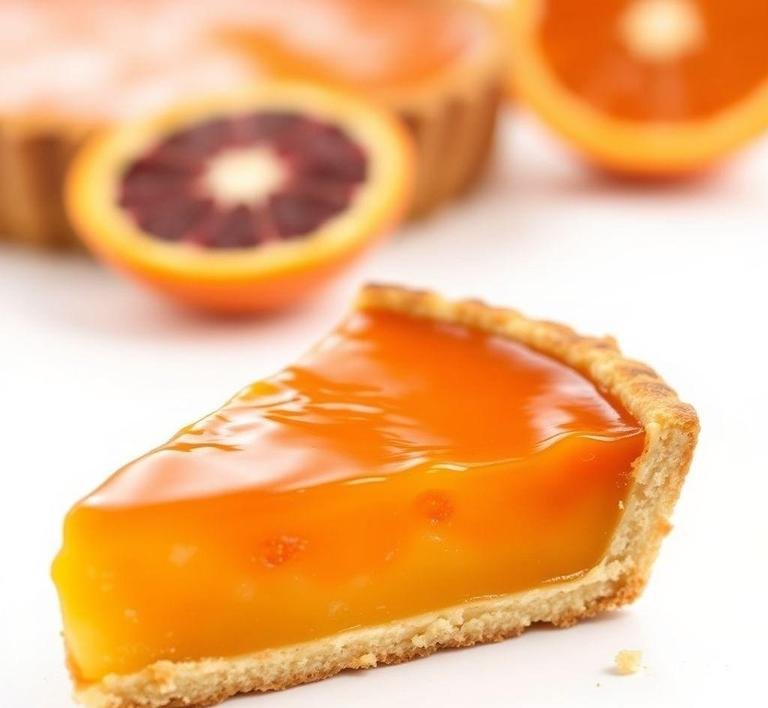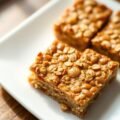Ah, the Bitter Orange Tart. I can’t quite remember the first time I came across Nigella Lawson’s recipe but it’s one of those dishes that immediately grabs your attention. The name itself is enough to spark curiosity. bitter and orange in the same sentence? I wasn’t sure whether to be intrigued or cautious. Turns out, the combination is magic.
The tart blends the deep, fragrant notes of bitter oranges (or Seville oranges, more specifically) with a delicate, buttery pastry base and a smooth, creamy filling. It’s sweet and tangy in equal measure and that bitterness? It cuts through the richness in the most sophisticated way. What I love about this tart is how it feels like something you’d find in a French patisserie but it’s shockingly simple to make. Nigella does this thing where she takes seemingly complex ingredients and techniques and makes them feel so accessible. The tart is elegant without being fussy.
The bitter oranges, often associated with marmalade, are the star. They have a distinct sharpness and complexity that’s different from the usual sweet oranges we’re familiar with. When paired with a buttery, sweet crust and a hint of vanilla in the filling, it’s an irresistible contrast that lingers in your mouth, with the bitterness of the fruit balancing out the sweetness beautifully.
If you’re looking for a dessert that’s a little off the beaten path but still familiar enough to be comforting, this tart is a dream. It’s got that touch of something a little unusual but still very much grounded in what makes desserts so universally loved: butter, sugar and oranges.
Nigella Bitter Orange Tart Recipe
Ingredients Needed

Okay, let’s break it down. The ingredients for this tart are surprisingly straightforward but they all come together in a way that feels luxurious. Here’s what you’ll need:
For the pastry:
- 200g (about 7 oz) plain flour
- 100g (about 3.5 oz) unsalted butter, cold and cubed
- 50g (about 1.75 oz) icing sugar (confectioners’ sugar)
- 1 egg yolk
- A pinch of salt
For the filling:
- 4 bitter Seville oranges (they’re typically in season around January-February but if you can’t find them, you can substitute with a combination of regular oranges and a little lemon zest for a similar sharpness)
- 200g (about 1 cup) caster sugar (superfine sugar)
- 3 large eggs
- 1 tbsp cornflour (cornstarch)
- 125g (about 1/2 cup) unsalted butter, melted
- 1 tsp vanilla extract
For decoration (optional):
- A dusting of icing sugar
Equipment Needed
Honestly, the beauty of this tart is how few special tools you need but here’s what you’ll want to gather:
- A tart tin, ideally 23cm (9 inches) in diameter. It’s best to go with a fluted tin with a removable base for easy release once it’s baked.
- A food processor to make the pastry (if you’re feeling lazy about rubbing the butter into the flour by hand).
- A saucepan for the bitter orange syrup.
- A whisk for beating the eggs and mixing everything together.
- A fine sieve for straining the bitter orange juice (and keeping the pulp and seeds out of the filling).
- An oven, obviously but at a very specific temperature. don’t forget to preheat it!
Instructions To Make Nigella Lawson’s Bitter Orange Tart
Making this tart is a little bit like assembling a jigsaw puzzle. each part seems small on its own but once everything comes together, it’s an absolute masterpiece.
Step 1: Make The Pastry
First, you’ll need to make the sweet pastry base. In a food processor (or by hand if you’re feeling extra), pulse the flour, butter, icing sugar and salt until the mixture resembles breadcrumbs. Add the egg yolk and pulse again until the dough starts to come together. Don’t overwork it! Turn the dough out onto a floured surface and press it into a ball. Wrap it in cling film and chill it in the fridge for at least 30 minutes. This will help prevent it from shrinking when you bake it.
Step 2: Preheat The Oven & Roll Out The Pastry
Once the dough has chilled, roll it out on a lightly floured surface to fit your tart tin. Carefully press it into the edges, then trim off any excess. If you have any cracks, just patch them up with bits of dough. pastry is surprisingly forgiving like that.
Prick the base with a fork and chill the dough for another 15 minutes to help it hold its shape. While it’s chilling, preheat your oven to 180°C (350°F).
Step 3: Blind Bake The Crust
Now it’s time to blind-bake the crust. Line the pastry with baking parchment and fill it with baking beans (or rice if you don’t have beans). Bake it for about 15 minutes, then carefully remove the paper and beans and bake for another 5 minutes or so until the crust is golden and crisp. Set aside to cool.
Step 4: Make The Bitter Orange Filling
While the crust is cooling, the filling is where the magic happens. Start by zesting the bitter oranges. You want to get all the fragrant, oily zest off but be careful not to get too much of the white pith as it can add bitterness in an unpleasant way. Juice the oranges. you’ll need about 250ml (1 cup) of juice.
In a saucepan, combine the orange juice, zest and sugar and heat gently until the sugar dissolves. Once it’s dissolved, bring it to a gentle simmer and cook for about 10 minutes or until it thickens slightly and reduces. Remove from heat.
In a separate bowl, whisk the eggs, cornflour and melted butter together until smooth. Slowly pour the warm orange syrup into the egg mixture, whisking constantly to avoid curdling the eggs. Once it’s all combined, pour this back into the saucepan and cook it over low heat, stirring constantly, until it thickens to a custard-like consistency.
Remove from heat and stir in the vanilla extract. The filling should be smooth and glossy.
Step 5: Assemble The Tart
Pour the orange filling into the cooled pastry shell, smoothing it out with a spatula. Bake the tart in the oven for about 15-20 minutes or until the filling is set but still a little wobbly in the center. Let the tart cool completely in the tin before you remove it.
Step 6: Serve & Enjoy
Once the tart has cooled, dust it lightly with icing sugar before serving. You can serve it as is or add a dollop of whipped cream or a few candied orange peel slices for a little extra flair.
What I Learnt
Making Nigella’s Bitter Orange Tart was an eye-opening experience for me. I’ve made a lot of tarts in my life but this one felt particularly special. The process taught me the value of patience. Every step feels worth it once you see that gorgeous golden tart sitting there, all shiny and decadent. I was reminded of how rewarding it is to make something from scratch, especially when the result is so unexpected.
The balance of sweet and bitter was just as Nigella promised. the first bite is like a beautiful contradiction. The sharpness of the oranges hits you first but then the smooth sweetness of the custard rounds everything out. It’s this harmony that made me realize just how much I love bittersweet flavors. I’ve always been someone who enjoys the contrast in food. salty and sweet, spicy and creamy. and this tart captured that in the most subtle way.
FAQs
What Makes Nigella Lawson’s Bitter Orange Tart So Unique?
What I love about this tart is how the bitter oranges balance perfectly with the sweet, buttery pastry. It’s that citrusy punch paired with rich, velvety cream that just makes it feel so indulgent yet refreshing at the same time. It’s not like your average tart, and when you first bite into it, you’ll understand why it’s such a showstopper.
Can I Substitute The Bitter Oranges With Regular Oranges?
You could, but I wouldn’t recommend it if you really want that distinct bitterness! The bitter oranges add an element that sweet ones just can’t replicate. If you’re feeling adventurous, try using Seville oranges-those are the go-to for this recipe, but regular oranges will still give you a delicious, though sweeter, version.
How Far In Advance Can I Make Nigella’s Bitter Orange Tart?
You can definitely make it a day or two ahead! In fact, I’ve found that the flavors intensify and meld even better if it sits for a while. Just be sure to store it in the fridge and let it come to room temperature before serving for the best texture. The tartness and richness just get more glorious as it settles.


